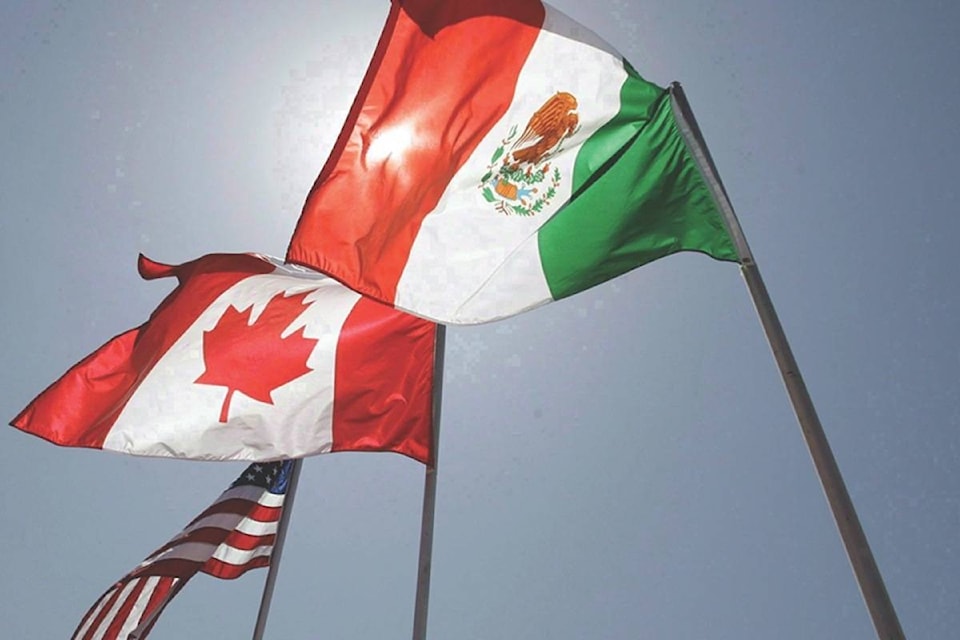WASHINGTON — A significant gap in positions on auto rules between the United States and Mexico continued to cast doubt on the likelihood of an imminent NAFTA deal Tuesday, as countries gathered for what could be a final effort to achieve an agreement this year.
Sources said Mexico had presented ideas this week on auto parts that differed substantially from the American goal at these talks: to benefit production in high-wage jurisdictions.
Mexico’s suggested rules would require slightly less North American content than what the U.S. favours, would not include a wage standard, would lack a requirement for North American steel and would allow companies a phase-in period of 10 years, far longer than the American plan.
The countries continued to say they were making progress at this round, which is potentially the final opportunity to get an agreement before elections in Mexico and the U.S. leave the talks in a freeze until 2019.
“Very productive,” said Jared Kushner, President Donald Trump’s son-in-law who has been popping in and out of the meetings being held across the street from the White House.
Standing next to him was Mexico’s Foreign Minister Luis Videgaray who said of the autos differences: “We’re making progress but we’re not there yet.”
Canada’s Foreign Affairs Minister Chrystia Freeland is using a vivid metaphor to describe the state of the NAFTA negotiations, as countries begin a multi-day push to deliver a deal.
She likens it to childbirth.
“When I was giving birth, one of my midwives said, ‘You never know how long the labour will be, but you know that each contraction is one contraction closer to the baby being born.’ And if I could use such a personal metaphor, that seems to apply to trade negotiations,” Freeland told reporters Tuesday.
“We are definitely making progress. I am not going to predict the day and the minute and the hour that we will be finished.”
Freeland says the countries are sharing feedback gathered from auto-industry stakeholders over recent days.
Mexico and the U.S. are sharply divided over the American plan to credit companies for building cars in wealthier, high-wage countries — in other words, outside Mexico. A Mexico-U.S. meeting to resolve those differences ran overtime on Monday, delaying Freeland’s first encounter with U.S. counterpart Robert Lighthizer until Tuesday morning.
Sources say Mexico has proposed that 70 per cent of all cars comprise North American parts to avoid a tariff — the U.S. has asked for 75 per cent. But the U.S. also wants a wage guarantee: that 40 per cent of every car be made in places that pay more than $16 an hour.
A Canadian union leader present at the talks blames Mexico for slow-walking efforts at wage reform.
Jerry Dias of Unifor suggested that if this current Mexican government won’t agree to boost salaries, perhaps everyone should wait a few months until after the Mexican election and negotiate with the next president.
Left-wing candidate Andres Manuel Lopez Obrador currently has a big lead in Mexico’s presidential polls.
Dias called low wages in Mexico the central issue of this negotiation — in his words the gorilla in the room. And he said Mexican negotiators seem more interested in keeping salaries low than in helping workers.
“You’ve got international American corporations … masquerading as Mexican negotiators. Nobody’s moving on the key issues,” Dias said.
“Ultimately Canada and the United States at some time or another are gonna have to join forces and say to Mexico, ‘Here’s what the wages have to be in the auto industry, here’s what the rules have to be.’ And if Mexico flatly refuses then I suggest we should wait until after July 1, when there’s a new Mexican president. …
“Ultimately we’re gonna have to show Mexico we’re not messing around anymore.”
One big unknown is what happens after an agreement on autos and whether the U.S. will soften other demands in order to get a quick deal.
